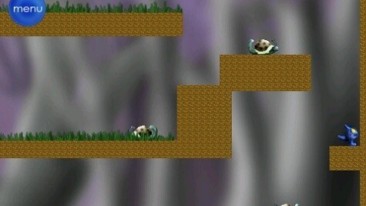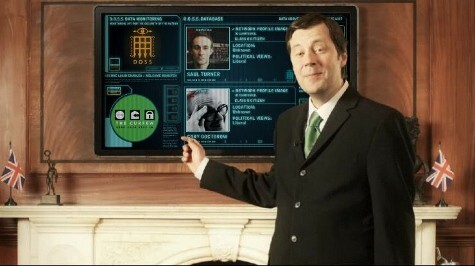
What we think
Imagine being armed with all the skills you need to explore a city and its secrets from the very start of the game. The Curfew grants you just this. The game puts you in the position of an unnamed protagonist who has to protect valuable information that may potentially bring down the tyrannical Shepherd Party government.
You have managed to scurry your way to a safehouse, where you must hide out until the state-instituted nightly Curfew passes. However, the threat of police brutality still lingers for you: Your accomplice has been captured and will likely give away your location under violent interrogation that evening. Within the confines of the safehouse, you must ensure that you can pass on the information to someone you find there that you can trust.
Thus begins your journey into the hearts and minds of fellow citizens who, for their own unique reasons, are also marooned at the safehouse. You move through this world in the manner of a point-and-click adventure, finding useful objects in the urban landscape, and holding your own through a number of questions and responses that may have you gaining or losing the trust of your peers.
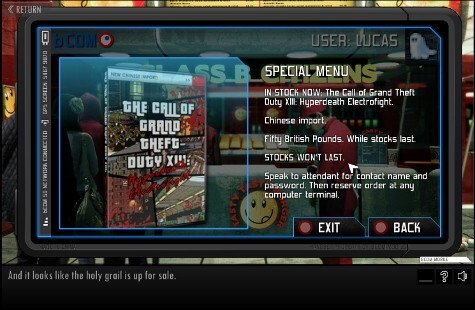
Remarkably, by encouraging the player to question and examine the political and civil authority in the game world, the player is also encouraged to survey the same in his or her own community. This is because there are familiar personalities struggling with a loss of freedom that we can easily see the value of in our everyday lives. One character that you meet is looking for a much more subversive video game that is caught by the regime censors, while another tries with all his might to get his drunken friend back home before the curfew runs down…
An Educational Premise
The Curfew is one of the few games that can be considered both as a serious game and an exciting fiction adventure game. Aimed at a students ages 14 years and up, the developers consciously designed the game to educate youth about contemporary civil liberties. This makes the story accessible to a wide audience but also ensures the brevity of its underlying worldview.
The character’s motivations are always clearly focused along one main drive; they present their main reason for being stuck at the safehouse, and there is nothing that feels contrived or two-dimensional about their internal questions, hopes and fears. This works particularly well because the narrative is structured predominantly by flashbacks. We can reasonably expect the four characters at the safehouse to censure whatever they do not want to talk about, or believe that it would not help articulate his or her narrative appeal.
The Curfew’s storytelling is comparable to good Hollywood films – allowing some exploration of its main characters without ever straying far from their singular drive. The storyline itself is highly linear, down to the order that you can question your fellows of the experiences that led them to the safehouse. Nonetheless, the game does generate enthusiasm for going through your Save files to play out all four alternate endings, because you have invested thought and consideration into learning about each of them.
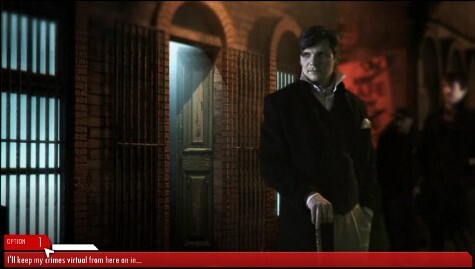
The game succeeds at recasting seemingly everyday actions into the grey area of law and civil society in this fictional world. Comic book author Kieron Gillen deftly weaves together a cogent and personal narrative of the trauma of not having the freedoms that we currently enjoy, and the lapse in the public memory when these freedoms are not universally shared and talked about.
Together with the small digital entertainment team at LittleLoud Studios, they have garnered positive response and praise in using an adventure genre framework to pursue their vision for interactive education. Their latest accolade is the Games for Change Festival 2011 Learning and Education Award Winner, which showcased The Curfew as a meaningful and expressive method to highlight the topic of civil freedoms in both the classroom and beyond.
Gameplay and style
The Curfew, as you’d notice right away, is heavily reliant on live-action video and interactive, 3D environments, mixed with simple yet effective cut-out style iconography that are associated with the coercive regime, the Shepard Party. This unified style is well-used throughout, keeping apace with the story, the interactive adventure game elements, and even the promotional videos for distribution on social networks and Youtube. The visual and audio hints never makes it unfairly difficult for you to find clues and objects to progress to the next space. Close-ups and point-of-view shots are used sparingly and to great effect, making the live-action technical choice more of an advantage than a disadvantage.
Of course, without great acting, the live-action would be for naught. How suitable, then, that the Curfew’s evocative world is slowly revealed through the gestures and conversations of believable actors. There will be characters that you will form an opinion on, and others that will gain your grudging admiration on the force of their personality alone. The characters address you directly in their narration, even if they may be taking you through a visual memory comprised of set environment pieces as typically indicative of an adventure game. Worries and fears lace their individual voices without resorting to melodrama and camp; sometimes humor arises where it’s hard to not laugh with my character while at others, an expression of revelation finds me sympathetic.
Where the Curfew struggles is in its core gameplay. While the questioning system is serviceable, the mini-games are inept in their mechanics and can digress from the plot. Unfortunately, they are also not skippable. While the Curfew could have easily incorporated engaging brain-teasers and puzzles for a change of pace, its mini-games have us spinning dials at random to “hack” a terminal, or scrubbing at toilets and windows. This hardly contributes to the educational sentiment that has been so carefully cultivated in the rest of the game.
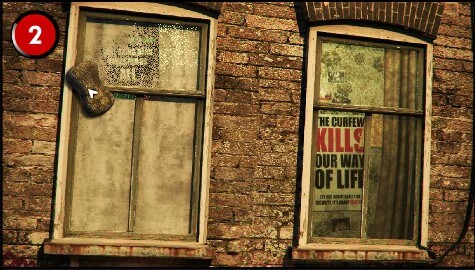
Lasting Impressions
Does The Curfew deliver on what it promises? For the most part, it engages where it is the most important, and at the right balance between youthful, political irreverence and interesting questions on civil rights. It also offers an immersive storyline that can be enjoyed its own right, which makes up the majority of the fun.
On the educational side, players who are not often exposed to seeing everyday experiences through political lenses may be in for a thought-provoking experience. Topics such as censorship and racial discrimination are touched upon in a manner reminiscent of progressive Primetime dramas, rather than as a textbook interactive scenario. Progressive political thinkers should not be mistaken though: the “information” that your character in the game is given to protect essentially acts as a deus ex machina.
It’s an artefact that never really reveals its secrets. Characters never actually learn community-based tools to deal with social uncertainties and the loss of civil liberties. Nonetheless, as a player you are tasked to look deeper beyond peoples’ selfish motivations, and to realize your best political allies. This alone makes the game captivating and worth playing.
[xrr rating=”3.5/5″]




